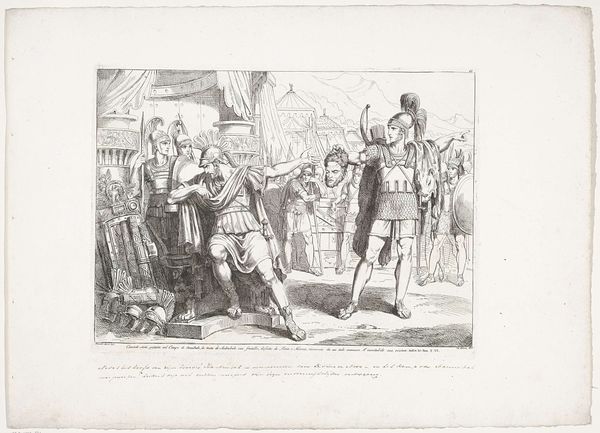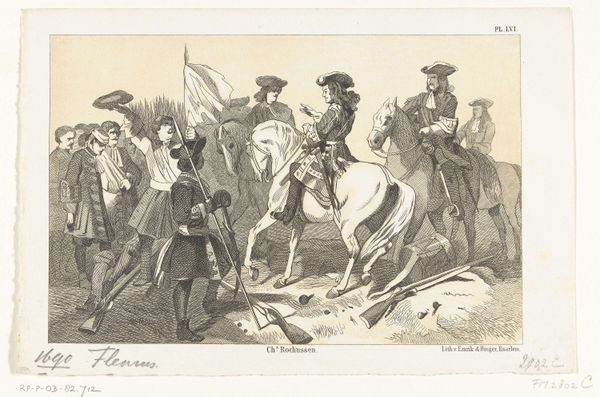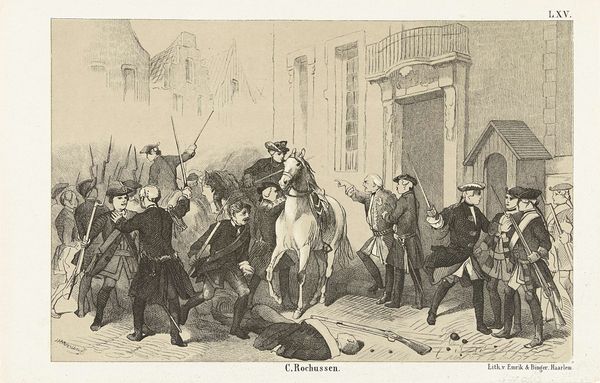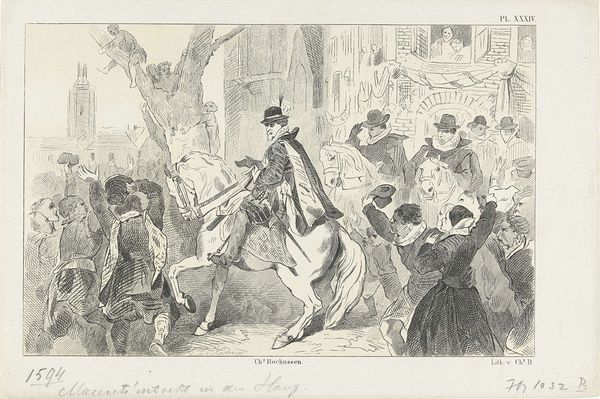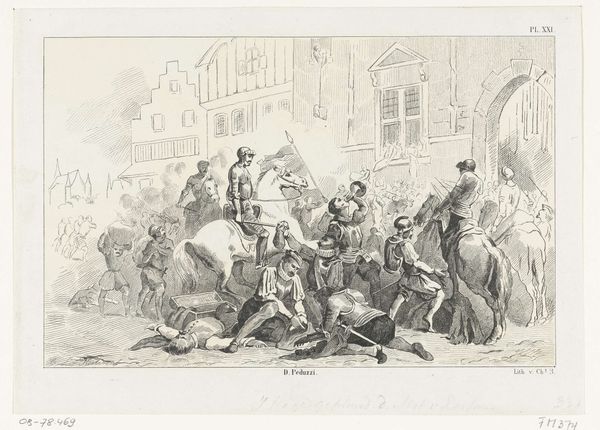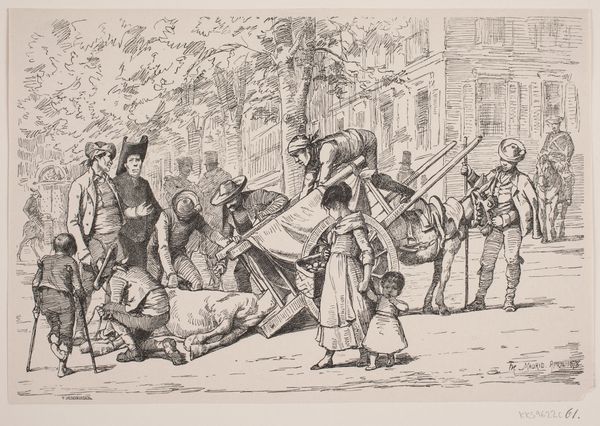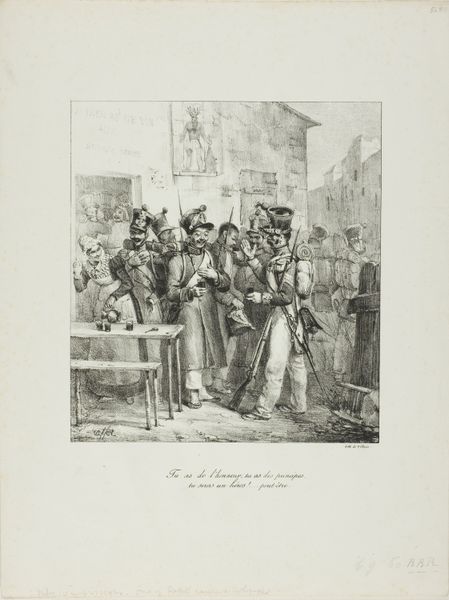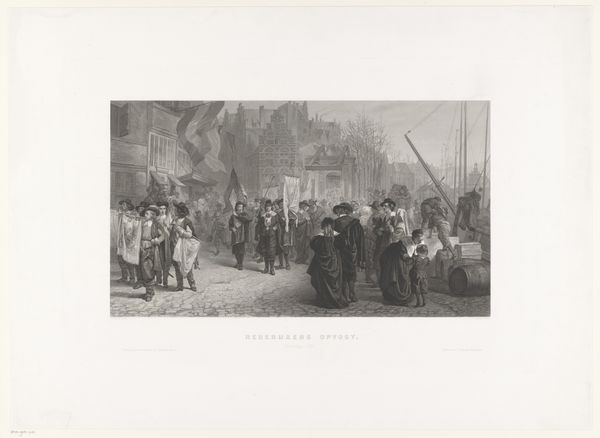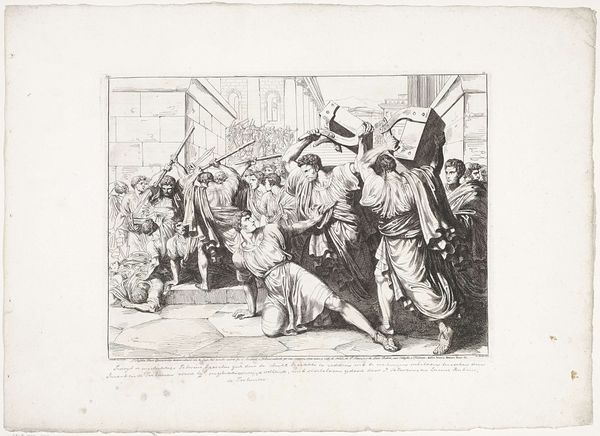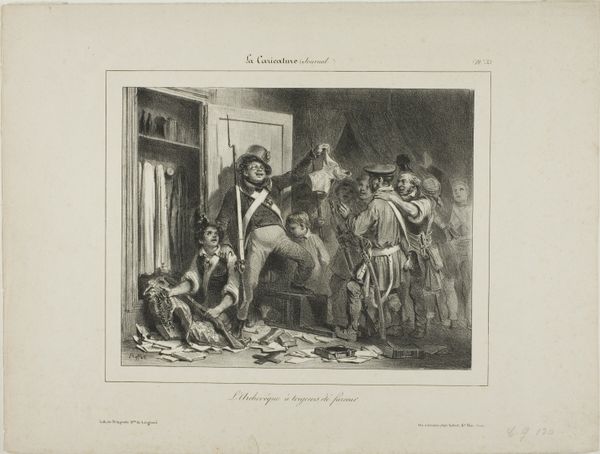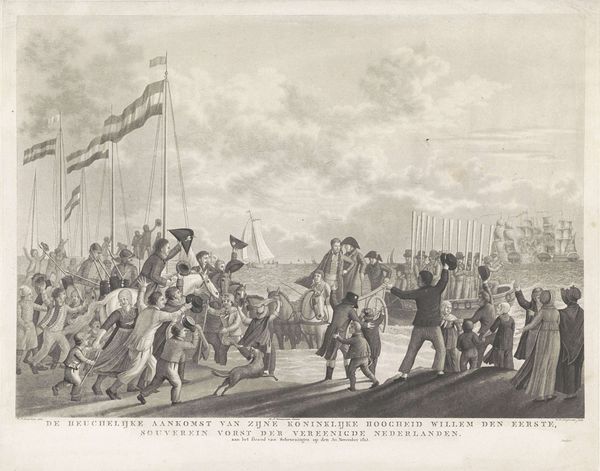
De achtjarige Karel van Egmond door de inwoners van Nijmegen gehuldigd als hertog van Gelre, 1473 1853 - 1861
0:00
0:00
print, engraving
#
portrait
#
narrative-art
# print
#
history-painting
#
academic-art
#
engraving
Dimensions: height 164 mm, width 230 mm
Copyright: Rijks Museum: Open Domain
Editor: This engraving, made between 1853 and 1861 by Christiaan Lodewijk van Kesteren, depicts the eight-year-old Charles of Egmond being welcomed as Duke of Guelders. The level of detail is remarkable; it almost feels like a scene from a play. How do you see this image relating to ideas around the history of power? Curator: It's a fascinating piece, particularly when considered in the context of 19th-century Dutch nationalism and how history was used to construct identity. These historical narrative prints often romanticize the past to reinforce certain political ideas. Notice the idealized presentation of Charles; what does this say about the public role that historical images play? Editor: I see your point. The boy Duke appears almost like a puppet, and there's this overwhelming sense of pageantry and constructed narrative. The print seems to be making a statement about Dutch pride in its historical figures, maybe even justifying certain power structures. Curator: Exactly! Consider the Rijksmuseum's role in showcasing images like these. Museums helped solidify these narratives by displaying and canonizing certain stories and figures while ignoring others. Does it make you question which aspects of the story it highlights, and what it leaves out? Editor: Definitely. It prompts me to consider what the artist—and the institutions that display the artwork—want the audience to believe about leadership, national identity, and even childhood. Curator: Precisely. It reveals how images become tools, reinforcing specific political ideologies and shaping public perceptions of history. Editor: So, by looking at how this seemingly celebratory print presents a historical moment, we can understand more about the values and socio-political landscape of the 19th century. Curator: Precisely! It all relates to how power uses and shapes historical narratives for its own purpose.
Comments
No comments
Be the first to comment and join the conversation on the ultimate creative platform.
